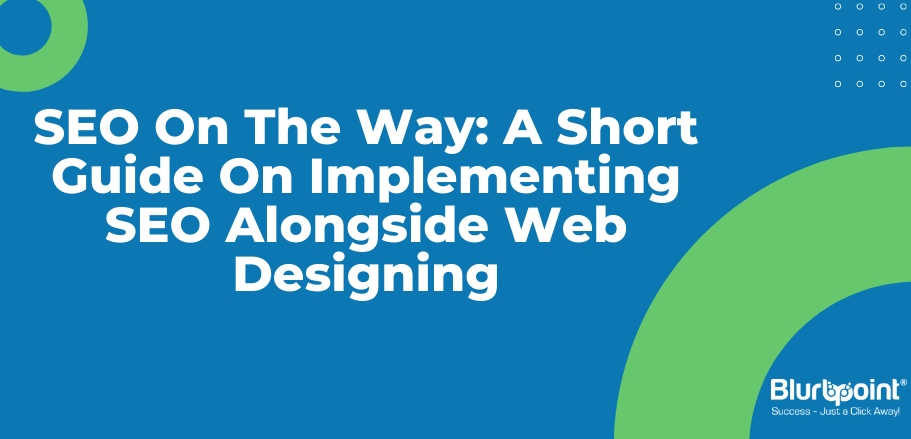GET A FREE CONSULTATION



Posted by Monish Vora
December 09, 2013
If you think that designing a beautiful, fully functional website that addresses your clients’ needs is enough to rank on search engines, you’re wrong. If your goal is that your client should reap the benefits of having a good online presence, SEO is unavoidable. Simply for the fact that it helps all the hard work put into web-designing show up on search engines, for all the helpful information, and not to forget the best user experience.
The following web design practices could improve a website’s SEO and their visibility. The points here are the foundations for any web-designer, who will get relief simply by knowing that all the hours spent in creating a website is now one of the top page contenders on search engines. These tactics may also help in improving the overall user experience as well.
Keywords are the most essential part for any search engine optimization projects. If wrong keywords are inserted without a thorough keyword research, search engines and the target market will never be able to find your site. When starting to work on the making of a website, it is important to define the objectives. Is a local area targeted, or is it wider with national or global targets? Keeping this plan in the mind, you could build pages that target those selected keywords.
1. Make a list of some potential keywords. The words or phrases should be relevant to your business, but not generic.
2. Input all the keywords into the Google Adwords Keyword Planner or Wordtracker or Wordstream and see their status.
3. Make a final list of the keywords based on the research.
4. Prepare all the required stuff to launch the keywords along.
For a website to make it into Google’s index, it is first required to tell Google what a particular page is all about. It is vital to position all the keywords rightly onto the page. It is recommended not to overstuff the page with keywords. Here are some of the best places.
• Title tag
• Website slogans
• Meta description and keywords
• Breadcrumb trails
• Navigation
• Bullet points
• Alt text
• The main website copy
• H1, H2 and H3 tags
• Title attribute on links
• Internal links
• Footer links
• URL’s
Search engine friendly navigation basically means having website structure that could be easily followed by search engines. Why a majority of websites are not found by the search engines, is because the links are not used smartly. Links play a very essential part in your organic search rankings, and thus it is advised to address this issue and see that all the links and buttons are text based. Search engines find it difficult to understand java script too and may result into crawling issues. With more and more people surfing the web on their mobile, using advanced scripting languages won’t work very well.
Having an SEO friendly URL means that you have inserted the keywords appropriately and the search engine is quickly able to figure out what the page is all about.
An example of an un-friendly URL:
https://www.xyzstore.com/products/item4?=206574
A better, more friendly URL would be:
https://www.xyzstore.com/home-furniture/bedrooms/wardrobe
As it could be observed, that the second option is enriched with keywords with a readable structure of the URL, which will help the search engine in indexing you.
Images are often overlooked in managing all the aspects of SEO, however they plan an equally important role in the success of a website on search engine.
The images are to be optimized for faster loading time and also search engine visibility. It should be ensured that the size of the image file is as small as possible, keeping in mind the mobile users and the ones with slower internet connections.
The best size for an image is anywhere between 30 and 100 kb and the best resolution for an image for SEO is 72 dpi.
It is a good practice to keep the images in context to all the content on the web page. The more relevant the image is to the text, the better results you’ll get for the rankings.
Give a description to the images with the help of the alt tag. The alt tags could smartly be used to describe what the image is all about, helping to place your targeted keywords as it is also an essential part of on-page SEO.
Social Media should essentially be integrated into an SEO strategy as it is a proven fact that a brand gets a phenomenal boost by building relations and interacting with connections. In addition to that, it gives you the exposure and helps in earning credibility.
Perhaps social media is considered a hot property. The number of visitors sharing links plays a huge role in your success in search engines. An engaging content could result into a large number of inbound links. Facebook, Twitter, LinkedIn and Digg are some of the most popular social media channels that could provide any organization and affordable online marketing channel that bring positive results.
The above mentioned ways will definitely ensure that your website gets the desired visibility on search engines, if implemented during the web designing process. There are methods that claim to reach the website on the top of Google overnight, however it is always effective to have a strong foundation for a website in the first place. Of course, having a reliable product and a service is the pre-requisite, however your online presence and marketing of the products and services will depend on how well your implement these techniques.